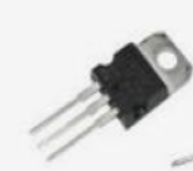Date:2025-07-04 Categories:Product knowledge Hits:293 From:Guangdong Youfeng Microelectronics Co., Ltd
Although relays and ansisttrors can both be used to convert or amplify signals, they have significant differences in the following aspects:
1. Working speed: Due to the use of semiconductor technology, the ansisttrors has fast switching speed and response time, making it suitable for high-frequency electronic applications. Due to the presence of mechanical contacts, relays operate at a slower speed and are suitable for relatively low-frequency applications.
2. Power processing capability: Relays can handle high voltages and currents, making them suitable for high-power switching applications. However, the power processing capability of transistors is relatively small, and they are usually suitable for low-power electronic devices.
3. Reliability: Due to the use of mechanical contact in relays, their lifespan is limited and they are susceptible to vibration and overload, which may lead to malfunctions over time. However, due to the absence of mechanical moving parts, the ansisttrors has higher relative reliability and longer lifespan.
As a semiconductor device, the main purpose of a ansisttrors is to amplify and control current, rather than its actual switching function. In addition, transistors require bias voltage and stable current during operation, which is relatively complex, while relays are simple and easy to use. Therefore, although transistors can perform some control functions similar to relays, fundamentally speaking, they are different devices and cannot simply replace each other.
In summary, although ansisttrors and relays have similar functions in some aspects, they have significant differences in their working principles, application ranges, and performance characteristics. The specific choice of which device to use depends on the specific application requirements and the demands for switching speed, power processing capability, and reliability.

Previous: Classification, Structure, and Principle of MOSFET
Next: What are the differences in the application of thyristors in circuits, which look like transistors?